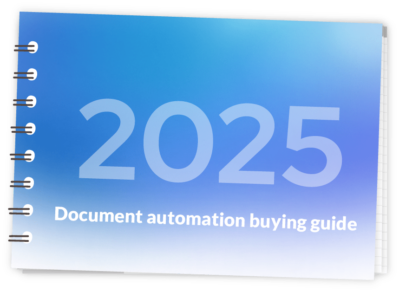What about AI?
AI doesn’t need a spotlight of its own; at Avvoka, we see it simply as a tool to enhance document automation.
That said, it’s hard to ignore the buzz around AI, especially with the rise of LLMs. These days, checking out a platform’s AI features is often top of mind for many buyers.
For this reason, we’ve chosen to dedicate a section specifically to AI and have also included it in our Document Automation Buying Guide.
Our AI philosophy
We take a two-fold approach when it comes to AI.
AI as a Tool to Enhance Document Automation
First, we see AI as a tool to enhance document automation rather than a replacement. In our view, traditional document automation ensures consistency and repeatability during the drafting phase and also serves as a prompt for contract standardisation. You can find more on our GenAI approach to document automation in this post.
Focusing on Meaningful AI Features
Second, while we test and experiment with AI regularly, we only implement AI features that offer tangible improvements to our document automation solution. These improvements don’t necessarily have to be groundbreaking; even small enhancements can make a significant difference.
Similarly, we applied this approach when creating the AI component in our Document Automation Buying Guide.
Some Useful Applications of AI
Templating
Template Automation
AI is great at spotting patterns. One of its most exciting uses right now is helping teams with the sometimes tricky task of automating templates. Even with no-code platforms, there’s some manual work involved. But AI takes it a step further — it can pinpoint the variables in a template and automate them in the platform.
Drafting
Questionnaire Answers
Another way AI can be used is to automatically respond to questionnaires by extracting relevant information from associated documents, for instance term sheets. Typically, junior lawyers are responsible for answering questionnaires, often by searching through emails and related documents to gather details of deals. AI can automate this process.
Inconsistency Detection
AI is effective at flagging errors and inconsistencies within a given context. For instance, when used in the framework of mass document creation, where the likelihood of mistakes is higher and harder to spot, AI can be particularly helpful.
Drafting Content
Content drafting has become a major focus for AI enthusiasts, with some even claiming that AI will replace document automation entirely. We've mentioned before we don’t quite agree with this approach and we explain our view in more detail here. That said, AI can still be useful for tasks like rewording questionnaire questions or occasionally adjusting clauses for stylistic reasons.

AI and Data Transparency: Key Questions to Ask
One important factor to consider when evaluating an AI feature embedded in a solution is whether it guarantees transparency around data usage.
Can the AI integration be switched on and off?
If you prefer not to use AI, the feature should be easily deactivated without affecting the platform’s core functionality.
This flexibility allows you to take control and mitigate any data risks. It also indicates that the platform views AI as an enhancement rather than a core element, ensuring that the solution still functions well with traditional, non-AI automation methods.
Can you choose which LLM to integrate?
Ensure that the vendor allows you to choose the AI model you want to use and that it can be easily integrated via API. Some solutions, such as Microsoft Copilot, offer the option to be hosted on your own servers. Being able to leverage this functionality can provide you with more control over your data.
Does the vendor communicate clearly?
It’s essential that the vendor communicates openly about the AI system they are using. Key questions to ask include:
- What specific LLM is being used?
- Does the LLM access any client data?
- Is the vendor aware of the details of the AI provider’s privacy policy

Next steps in the AI progression
Clear AI Roadmap
The vendor should have a clear and well-defined AI roadmap. They should understand which use cases and features can be enhanced through AI and outline these improvements in their plan.
Realistic AI Roadmap
The AI solutions presented should be realistic, considering the current state of LLM. While AI is powerful, its strengths lie in tasks like pattern recognition, error detection, information retrieval, clustering, and labeling. You can read more about AI’s capabilities in our post here.
Vendor Willing to Adjust the AI Roadmap
It’s particularly valuable if the vendor is open to collaborating on such a transformative area as AI. Check if the vendor is willing to adapt their AI roadmap based on your feedback or suggestions. Flexibility in this regard could be a major benefit.





 Document Process automation
Document Process automation 




